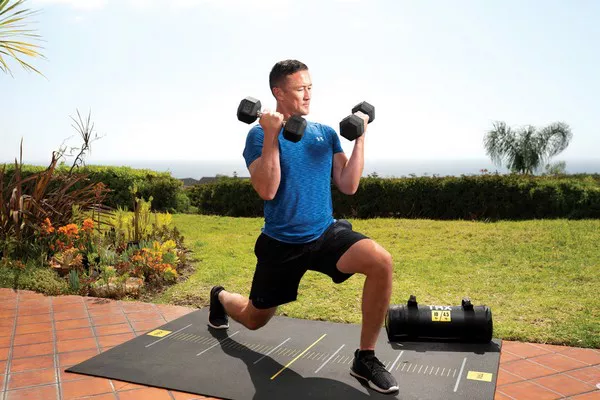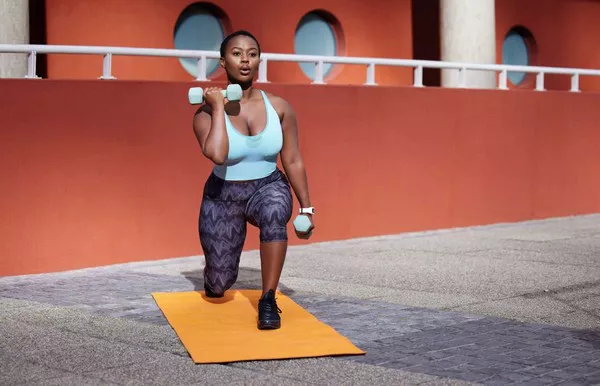Cardiovascular endurance is the ability of the heart, lungs, and circulatory system to deliver oxygen and nutrients to the muscles during prolonged periods of physical activity. Improving cardiovascular endurance can lead to several health benefits, including reduced risk of heart disease, improved lung function, and increased energy levels. In this article, we will explore how to improve cardiovascular endurance through various forms of physical activity.
The Benefits of Cardiovascular Endurance
Improving cardiovascular endurance can lead to several health benefits, including:
Reduced risk of heart disease: Regular cardiovascular exercise can help improve heart health, reducing the risk of heart disease and other cardiovascular conditions.
Improved lung function: Cardiovascular exercise can help improve lung function, increasing oxygen uptake and reducing shortness of breath during physical activity.
Increased energy levels: Improving cardiovascular endurance can lead to increased energy levels and improved overall fitness, making it easier to engage in other physical activities.
Improved mental health: Cardiovascular exercise can help reduce stress and improve mood, leading to improved mental health and well-being.
Improved overall fitness: Improving cardiovascular endurance can lead to improved overall fitness, including increased endurance, strength, and flexibility.
How to Improve Cardiovascular Endurance
Improving cardiovascular endurance can be achieved through various forms of physical activity. Here are some tips for improving cardiovascular endurance:
Start slow: If you are new to exercise, start with low-intensity activities, such as walking or cycling, and gradually increase the intensity and duration of your workouts.
Incorporate interval training: Interval training, which involves alternating periods of high-intensity exercise with periods of rest or low-intensity exercise, can be an effective way to improve cardiovascular endurance.
Engage in aerobic exercise: Aerobic exercise, such as running, swimming, or cycling, can help improve cardiovascular endurance by increasing heart rate and oxygen uptake.
Incorporate strength training: Strength training can help improve cardiovascular endurance by increasing muscle strength and endurance, which can improve overall fitness and reduce fatigue during physical activity.
Mix it up: Varying your workouts can help prevent boredom and challenge your body. Try incorporating different types of physical activity, such as swimming, cycling, or yoga, into your routine.
Stay hydrated: Drink plenty of water before, during, and after your workouts to stay hydrated and support performance.
Get enough rest: Adequate rest and recovery are important for improving cardiovascular endurance. Be sure to get enough sleep and allow your body time to recover between workouts.
Examples of Cardiovascular Endurance Exercises
Here are some examples of physical activities that can help improve cardiovascular endurance:
Running: Running is a high-intensity aerobic exercise that can help improve cardiovascular endurance and burn calories.
Cycling: Cycling is a low-impact aerobic exercise that can help improve cardiovascular endurance and build lower body strength.
Swimming: Swimming is a low-impact aerobic exercise that can help improve cardiovascular endurance and build upper body strength.
Rowing: Rowing is a full-body aerobic exercise that can help improve cardiovascular endurance and build upper body and core strength.
Dancing: Dancing is a fun and low-impact aerobic exercise that can help improve cardiovascular endurance and coordination.
Jumping rope: Jumping rope is a high-intensity aerobic exercise that can help improve cardiovascular endurance and build lower body strength.
Hiking: Hiking is a low-impact aerobic exercise that can help improve cardiovascular endurance and build lower body strength.
Conclusion
Improving cardiovascular endurance can lead to several health benefits, including reduced risk of heart disease, improved lung function, and increased energy levels. To improve cardiovascular endurance, start slow, incorporate interval training, engage in aerobic exercise, incorporate strength training, mix up your workouts, stay hydrated, and get enough rest. Examples of physical activities that can help improve cardiovascular endurance include running, cycling, swimming, rowing, dancing, jumping rope, and hiking. If you are unsure about how to improve your cardiovascular endurance, consider consulting a professional, such as a personal trainer or healthcare provider.
[inline_related_posts title=”You Might Be Interested In” title_align=”left” style=”list” number=”6″ align=”none” ids=”4842,4800,4797″ by=”categories” orderby=”rand” order=”DESC” hide_thumb=”no” thumb_right=”no” views=”no” date=”yes” grid_columns=”2″ post_type=”” tax=””]






























